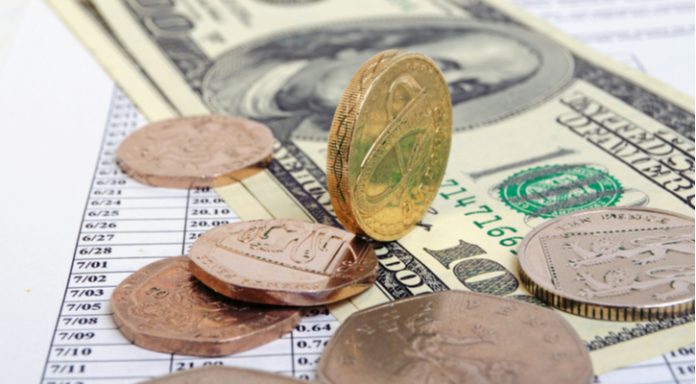The pound rallied hard on Monday, hitting a high of US$1.2863 before giving back all its gains. The pound US dollar exchange rate ended the session flat on the day at US$1.2816.
| What do these figures mean? |
|---|
| When measuring the value of a pair of currencies, one set equals 1 unit and the other shows the current equivalent. As the market moves, the amount will vary from minute to minute.For example, it could be written:1 GBP = 1.28934 USDHere, £1 is equivalent to approximately $1.29. This specifically measures the pound’s worth against the dollar. If the US dollar amount increases in this pairing, it’s positive for the pound. Or, if you were looking at it the other way around:1 USD = 0.77786 GBPIn this example, $1 is equivalent to approximately £0.78. This measures the US dollar’s worth versus the British pound. If the sterling number gets larger, it’s good news for the dollar. |
Pound traders were in a broadly optimistic mood at the start of the week, after 27 European leaders signed off the Brexit deal over the weekend. Market participants had been expecting the leaders to endorse the plan. On Monday, UK Prime Minister Theresa May began a two-week campaign to drum up support for her Brexit package before it goes before Parliament. Theresa May received criticism from all sides in the Commons today for the Brexit deal which pleases neither Leavers or Remainers. Theresa May remained resilient, insisting that this is the only Brexit deal available despite President Trump saying that it could stop a trade deal with the US.
| Why is a “soft” Brexit better for sterling than a “hard” Brexit? |
|---|
| A soft Brexit implies anything less than UK’s complete withdrawal from the EU. For example, it could mean the UK retains some form of membership to the European Union single market in exchange for some free movement of people, i.e. immigration. This is considered more positive than a “hard” Brexit, which is a full severance from the EU. The reason “soft” is considered more pound-friendly is because the economic impact would be lower. If there is less negative impact on the economy, foreign investors will continue to invest in the UK. As investment requires local currency, this increased demand for the pound then boosts its value. |
Today Brexit will remain a key driver for the pound. Investors could take a minute to glance at data from the Confederation of British Industry (CBI). The CBI will release sales data, which analysts expect to show a recovery in reported sales in November after a weak October. This data will come as investors digest encouraging reports that consumers spend over £7.7 billion this Black Friday and Cyber Monday.
US Consumer Confidence To Slip Back From 18 Year High
After a weaker start, the dollar gained in strength across Monday. There was no US economic data released; however, dollar investors were preparing themselves for a busy week ahead. Today US consumer confidence data will attract the attention of dollar traders. Analysts are expecting consumer confidence to dip in November to 136, down from an 18 year high of 137.9 in October. The strong labour market in the US, where unemployment is at multi decade low of 3.7% has helped lift consumer’s spirits. Additionally, low inflation, high business confidence and low interest rates have contributed to boosting consumer confidence.
The prospect of higher interest rates could slowly start to drag on consumer spirits. A weaker reading of consumer confidence could pull the dollar lower.
| Why does poor economic data drag on a country’s currency? |
|---|
| Slowing economic indicators point to a slowing economy. Weak economies have weaker currencies because institutions look to reduce investments in countries where growth prospects are low and then transfer money to countries with higher growth prospects. These institutions sell out of their investment and the local currency, thus increasing supply of the currency and pushing down the money’s worth. So, when a country or region has poor economic news, the value of the currency tends to fall. |
Looking beyond today, US third quarter GDP is due to released on Wednesday. Analysts are expecting the economy to have grown at 3.6% in the third quarter, a slight uptick from 3.5%.
This publication is provided for general information purposes only and is not intended to cover every aspect of the topics with which it deals. It is not intended to amount to advice on which you should rely. You must obtain professional or specialist advice before taking, or refraining from, any action on the basis of the content in this publication. The information in this publication does not constitute legal, tax or other professional advice from TransferWise Inc., Currency Live or its affiliates. Prior results do not guarantee a similar outcome. We make no representations, warranties or guarantees, whether express or implied, that the content in the publication is accurate, complete or up to date. Consult our risk warning page for more details.
This article was initially published on TransferWise.com from the same author. The content at Currency Live is the sole opinion of the authors and in no way reflects the views of TransferWise Inc.





